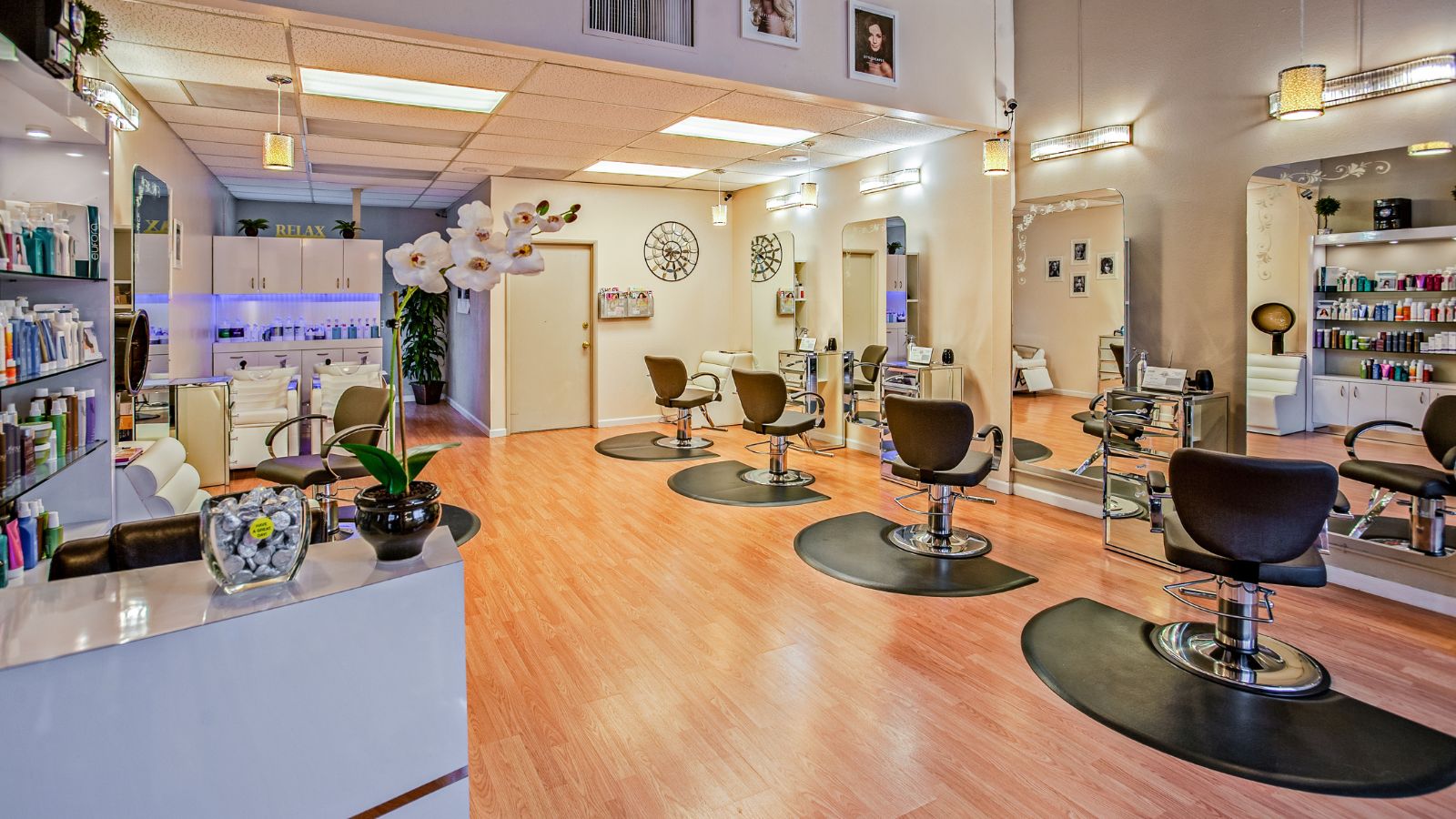Managing a successful salon in today’s competitive beauty industry requires more than just passion for aesthetics. It demands strategic planning, effective team management, and business acumen to stay profitable while delivering exceptional client experiences. Successful salon management hinges on finding the right balance between working on your business strategy and maintaining daily operations. Many salon owners get trapped in the cycle of handling daily appointments without dedicating time to growth planning.
To thrive as a salon manager, clear communication with your staff is essential. Creating a vision for your salon and effectively conveying it to your team helps everyone work toward common goals. Finding the right proximity to staff—professional yet approachable—creates a positive workplace culture that clients can feel when they walk through your doors. Simplify business management with a free salon POS app, a must-have salon booking software for busy salon owners. Exploring innovative wellness solutions, like those offered by Happy Head, can also enhance the overall client experience.
Mastering time management and delegation are crucial skills for salon managers who want to avoid burnout. By entrusting capable staff with appropriate responsibilities, managers can focus on business development and client relationships rather than being consumed by day-to-day tasks. This strategic approach allows for sustainable growth while maintaining the quality service that builds customer loyalty.
Key Takeaways
- Effective salon management requires balancing strategic business planning with daily operational excellence.
- Clear communication and appropriate professional relationships with staff create the foundation for a successful salon culture.
- Implementing proper systems and technology streamlines operations and helps prevent management burnout.
Mastering Salon Operations and Staff Management
Effective salon management requires a careful balance of operational excellence and strong leadership skills. Successful salon managers understand that their role extends beyond administrative tasks to creating systems that optimize productivity while maintaining staff satisfaction.
Optimizing Appointment Scheduling
Efficient appointment scheduling forms the backbone of salon operations. Implementing a digital booking system can streamline this process, reducing scheduling conflicts and minimizing downtime between clients.
Many salon software options offer features like automated reminders, which can reduce no-shows by up to 60%. These systems also provide valuable analytics on peak hours and service duration trends.
Consider implementing buffer times between appointments, especially for complex services. This prevents stylist burnout and accommodates services that occasionally run longer than expected.
Scheduling best practices:
- Block similar services together to maximize efficiency
- Allow 10-15 minute buffers for premium services
- Review booking patterns monthly to adjust staffing accordingly
- Consider double-booking techniques for services with processing time
Implementing Effective Communication and Delegation
Clear communication channels establish the foundation for smooth salon operations. Morning huddles (5-10 minutes) can align the team on daily goals and special client needs.
Delegation requires understanding each team member’s strengths. Assign responsibilities that match individual skills while providing growth opportunities. This increases both productivity and job satisfaction.
Document processes and expectations in a centralized location. Shared digital platforms like Google Workspace or salon-specific management tools ensure everyone has access to updated information.
Effective delegation strategies:
- Assign tasks based on skill level and career goals
- Provide clear instructions with measurable outcomes
- Follow up consistently but avoid micromanaging
- Create accountability systems with regular check-ins
Understanding Legal Aspects: FLSA and Right-to-Work
Canadian salon managers must navigate provincial employment standards that govern minimum wage, overtime, and working conditions. These regulations vary by province but generally cover similar protections as the Fair Labour Standards Act in the US.
The classification of workers—whether as employees or independent contractors—significantly impacts tax obligations and legal responsibilities. Misclassification can lead to serious financial penalties.
In Canada, the term “right-to-work” differs from American usage. Canadian salon managers should focus on provincial employment standards legislation which outlines workers’ rights and employer obligations.
Legal compliance checklist:
- Verify proper worker classification
- Ensure compliance with provincial minimum wage laws
- Maintain accurate time records for hourly employees
- Post required employment standards information
- Review service commission structures for compliance
Maintaining a Healthy Work Environment
Salon environments present unique health and safety considerations. Regular maintenance of ventilation systems helps minimize exposure to chemical fumes from hair products and nail services.
Ergonomic equipment reduces the physical strain on stylists who stand for extended periods. Invest in anti-fatigue mats, adjustable chairs, and properly positioned stations to prevent repetitive strain injuries.
Create a supportive culture that addresses both physical and mental well-being. The beauty industry can be emotionally demanding, with stylists constantly managing client expectations and staying current with trends.
Workplace wellness initiatives:
- Schedule regular team breaks during long shifts
- Provide proper PPE for chemical services
- Organize quarterly team-building activities
- Invest in continuing education opportunities
- Implement a fair system for handling challenging clients
Developing a Robust Marketing and Growth Strategy
Marketing is the engine that drives salon growth and sustainability. A well-crafted strategy helps attract new clients while retaining existing ones through targeted approaches that highlight your salon’s unique offerings.
Creating a Marketing Plan Tailored to the Beauty Business
A successful salon marketing plan begins with identifying your target audience. Determine who your ideal clients are based on demographics, preferences, and spending habits. This knowledge allows you to tailor your messaging effectively.
Set clear marketing objectives with measurable goals such as increasing bookings by a specific percentage or boosting retail product sales. Establish a realistic budget that allocates resources toward methods that deliver the best returns.
Differentiate your salon by developing a unique selling proposition (USP) that highlights what makes your services special. This could be specialized treatments, exceptional customer service, or expertise in particular techniques.
Track results diligently using metrics like new client acquisition costs, retention rates, and return on marketing investment. Adjust strategies based on performance data rather than assumptions.
Leveraging Social Media for Salon Promotion
Social media platforms offer powerful tools for showcasing your salon’s work and building a loyal following. Instagram and Pinterest are particularly effective for beauty businesses due to their visual nature.
Create a content calendar that includes before-and-after transformations, styling tips, product recommendations, and behind-the-scenes glimpses of your salon. Consistency in posting maintains audience engagement and builds brand recognition.
Encourage clients to share their results with appropriate hashtags, generating authentic word-of-mouth marketing. Consider implementing a referral program that rewards clients who bring new customers to your salon.
Engage meaningfully with followers by responding to comments, addressing questions promptly, and creating interactive content like polls or tutorials. This builds community around your brand and establishes trust with potential clients.
Planning for Long-Term Success
Develop a growth strategy that expands beyond day-to-day operations. Consider how your salon will evolve over the next 3-5 years, including potential service additions, location expansions, or staff development opportunities.
Invest in continuous education and trend research to keep your salon offerings fresh and relevant. Beauty industry preferences change rapidly, and staying ahead of trends positions your business as an industry leader.
Build strategic partnerships with complementary businesses like wedding planners, photographers, or fashion boutiques to create referral networks. These relationships can introduce your salon to new client bases.
Consider diversifying revenue streams through retail product sales, specialized treatments, or membership programs. Multiple income sources provide financial stability and growth opportunities even during seasonal slowdowns.
Conclusion
Managing a salon successfully requires a blend of business acumen, leadership skills and genuine passion for the beauty industry. Effective salon managers prioritize clear communication with staff, implement strategic financial planning and create exceptional client experiences.
Building a strong team through thoughtful hiring and ongoing professional development ensures your salon can thrive even during challenging times. Time management and organizational systems help maintain smooth operations while preventing burnout.
Remember that successful salon management is a continuous learning process. By implementing these proven strategies and remaining adaptable to industry changes, salon managers can create profitable businesses that stand the test of time.






